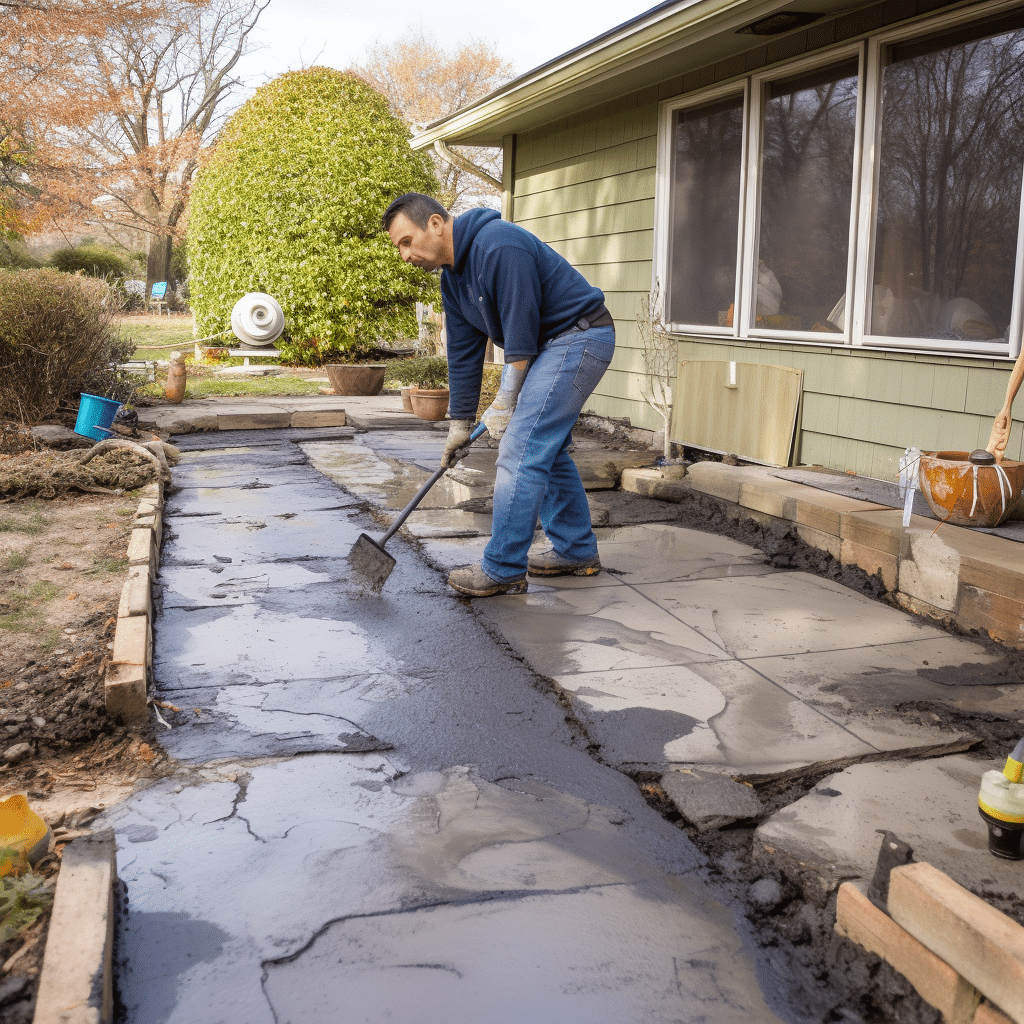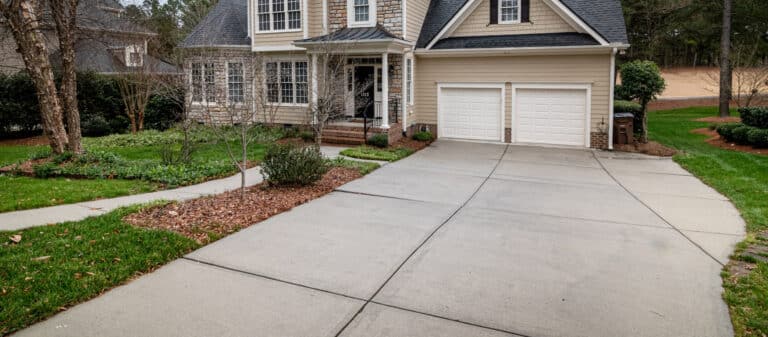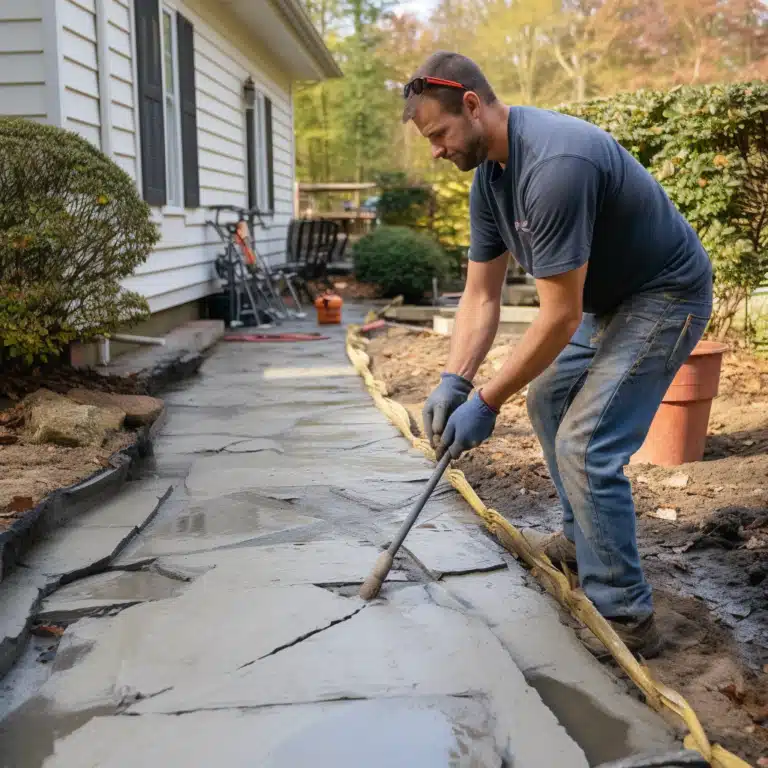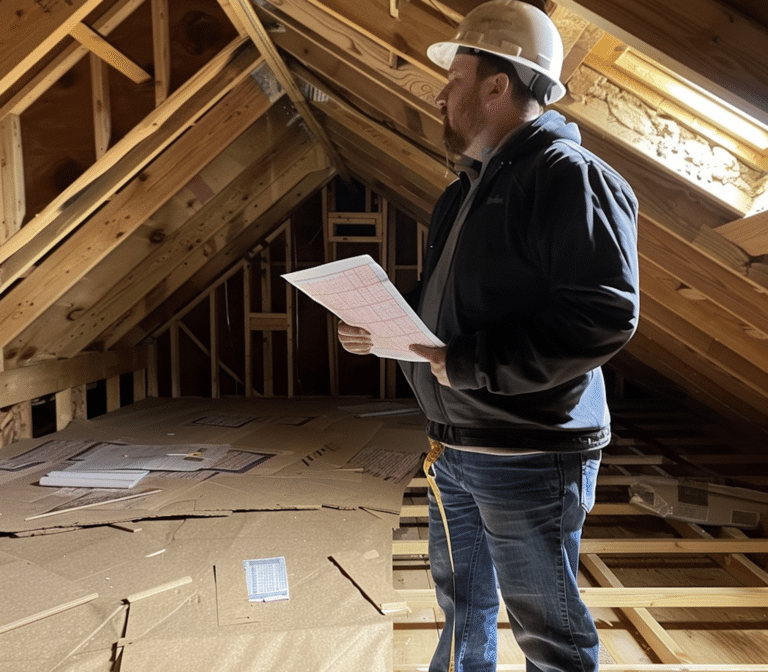As a Pennsylvania homeowner, you’re probably used to pothole dodging; Scranton was once ranked as the 11th worst metro in terms of road conditions!
However, no piece of concrete is spared from the rapid freeze/thaw cycle that plagues Pennsylvania every spring.
Tack on Pennsylvania’s karst topography, and it’s increasingly common to see sidewalks and driveways in disrepair around the change of the seasons.
We understand that slab replacement or driveway repair is the last expense any homeowner wants to budget for. That’s why concrete leveling is such a revolutionary approach to concrete repair.
But with a few different options to choose from, which type of concrete leveling is right for you?
How Does Concrete Leveling Work
Concrete leveling is a form of concrete repair that attempts to even concrete slabs and return them to their original positions. The most common process of concrete leveling is known as polyjacking, where a ⅝’ hole is drilled into a concrete slab, and a rapidly expanding polyurethane foam is injected to fill any voids.
However, there are several different forms of concrete leveling to choose from, including:
- Polyjacking
- Mudjacking
- Sandjacking
As their name implies, each method indicates what material will be injected under the slab to raise it to its original position.
Mudjacking vs. Polyjacking
Aside from polyjacking, mudjacking is the most commonly used form of concrete leveling. Mudjacking is a cheap, short-term solution to concrete leveling that involves using a hydraulic pump to create an even surface underneath the concrete slab.
While more affordable than polyjacking, mudjacking only lasts an average of 2-5 years before showing signs of disrepair.
Polyurethane foam is much sturdier and lasts for twenty years or longer because it fills all of the voids underneath a slab, whereas mud jacking only creates an artificial, even layer of mud that breaks down over time.
One additional perk of polyjacking is that it takes as little as 15 minutes to cure, meaning you could drive a car over your driveway as soon as the repair finishes.
| Polyurethane Foam (Polyjacking) | Mudjacking | |
| Time to Cure | 15 Minutes | 1-2 Days |
| Cost | $5 – $15 per sq. ft. | $3 – $6 per sp. ft.* |
| Durability | 20-50 Years | 2-5 Years |
*Numbers taken from Angi.
Risks of Uneven Concrete
Regardless of what service you choose, the question of whether or not concrete leveling is worth it comes down to a matter of budget vs. risk.
To illustrate some of the benefits of concrete leveling, it’s important that we outline the risks of leaving concrete in your driveway or sidewalk unaligned.
- Tripping Hazard: You will be financially liable for any injuries on your property caused by uneven concrete.
- Drainage issues: Uneven concrete can impact stormwater runoff and actually make repairs harder over time.
- Structural Issues: Cracked or buckled concrete can spread and cause further issues with load management across your property.
- Decreased Equity and Property Value: Blistered concrete is an indicator that decreases curb appeal and the overall resale value of your house.
- Accessibility Concerns: Extreme cases of damaged concrete can make it difficult for people to access your driveway or a private road you may own.
Signs You Need Concrete Leveling
Ignoring concrete repair can be a costly risk for any homeowner. Therefore, it’s important to spot the signs of concrete disrepair and when concrete leveling is necessary to repair your home.
- Concrete slabs are sunken or misshapen
- Slabs have visible cracks
- Tripping hazards are visible
- Water is pooling around your home or basement
Cases Where Concrete Leveling Is Not Suitable
In certain cases, repair or replacement may be warranted. For example, instances where tree roots have disrupted the concrete, cannot be resolved using polyjacking or any other method. Likewise, instances where leveling is not sufficient to solve a problem may warrant a new slab.
Benefits of Concrete Leveling with Polyurethane Foam
When compared to the cost and burden of replacing a slab or using other rudimentary forms of concrete leveling (i.e., mudjacking), polyurethane foam provides significant benefits for any homeowner.
- Cost-Effective: The cost of concrete leveling is more affordable than replacing an entire concrete slab.
- Durable: Concrete leveling with polyurethane can last a minimum of 20 years.
- Fast Repairs: Level concrete is as little as an hour, and drive over it in less than two.
- Environmentally Friendly: Leveling concrete eliminates the need to produce more concrete and dispose of the old slab.
Is Polyjacking Worth It?
Yes, polyjacking is worth it financially and as a quick fix with long-lasting results. Polyurethane foam offers the sturdiest solution and cures much faster than mudjacking. Our only recommendation is that you go with a company you trust that will deliver the best results for your project.
FAQs: What is Concrete Leveling?
What Causes Concrete to Become Uneven?
Uneven concrete can develop for a number of different reasons, including expansive soil, invasive tree roots, or excessive contact with moisture that unsettles a concrete slab from its joists.
Can Polyjacking Fix Large Cracks?
Polyjacking can fix large cracks by filling all the voids underneath and evening the surface. A quick patch could be applied to the top to seal the crack to prevent further damage.
How Long Does Concrete Leveling with Polyurethane Foam Take?
On average, it can take between 1-3 hours, depending on a couple of factors:
- The size of the job
- The contractor you hire
- The extent of the damage










